
- Home
- Workshops / Tours
- Diary / Blog
- Galleries
- Foreign Trips
- Tasmania 2016
- NE Queensland 2016
- Western Alps 2016
- NE Spain 2016
- Australia's Wet Tropics 2015
- Australia's Top End 2015
- SW Australia 2015
- Switzerland 2015
- Andalucia 2015
- Belize 2015
- Australia 2014
- Switzerland 2014
- Belize 2014
- Bahama Islands 2014
- Switzerland 2013
- Ecuador 2012-2013
- Florida 2011-2012
- Vancouver Island 2011
- Australia 2010
- Peru 2008
- Bulgaria 2007
- Lesvos 2006
- California 2006
- New Zealand 2005
- Extremadura 2005
- Goa, India 2004
- The Gambia 2003
Ecuador
19th December 2012 - 20th January 2013
Sani Lodge
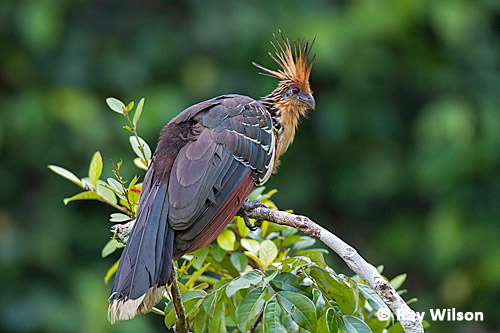
Hoatzin (Opisthocomus hoatzin)
Sani Lodge is situated deep within the rainforest 100km downriver of the town of Coca and is owned and operated entirely by the indigenous community of Sani Isla. Getting there is an adventure in itself!
After landing in Coca (a 30 minute flight form Quito) we transferred to a large motor-powered canoe for a 3 hour trip downriver. This was followed by a 1km walk along a boardwalk through the forest to another wharf where we got into a much smaller canoe for a 30 minute paddle along a creek that opens out onto the lagoon on which the lodge accommodation is situated.
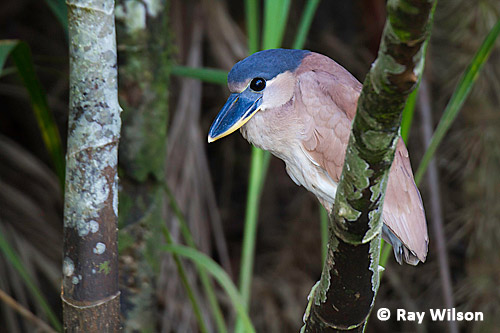
Boat-billed Heron (Cochlearius cochlearius)
The majority of our photography here was done from canoes, whose inherently unstable platform created an addition challenge to getting sharp, well composed photos.
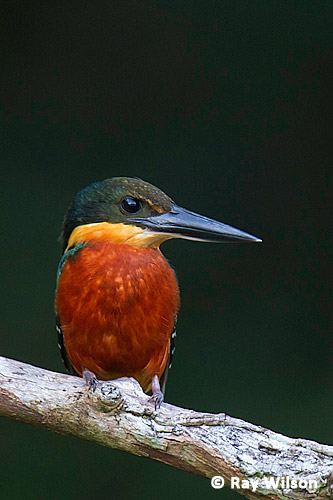
Green-and-rufous Kingfisher (Chloroceryle inda) |
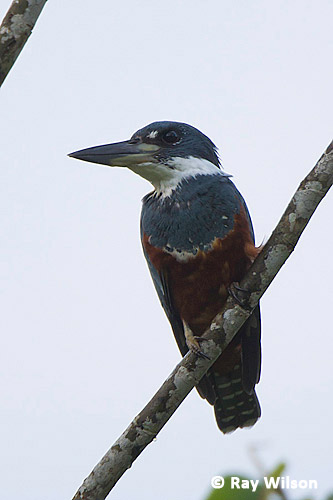
Ringed Kingfisher (Megaceryle torquata) |
Birdlife around the edges of the lagoon and along the creeks was fairly abundant and included 4 out of the 5 neotropical kingfishers, three of which are shown here. The only one I failed to get decent photos of was the American Pygmy Kingfisher.
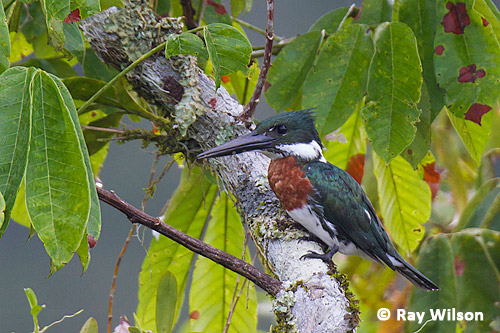
Amazon Kingfisher (Chloroceryle amazona)
At the far end of the lagoon, a family of Wattled Jacanas were foraging for invertebrates on the floating vegetation...
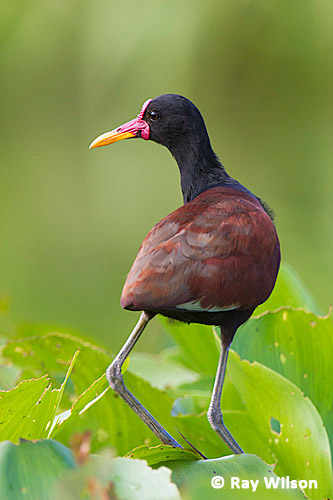 adult |
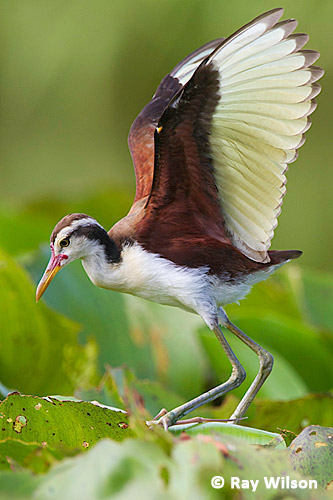 immature |
Wattled Jacana (Jacana jacana)
We also discovered a couple species of roosting nightjars sitting on exposed perches on the branches overhanging the lagoon.
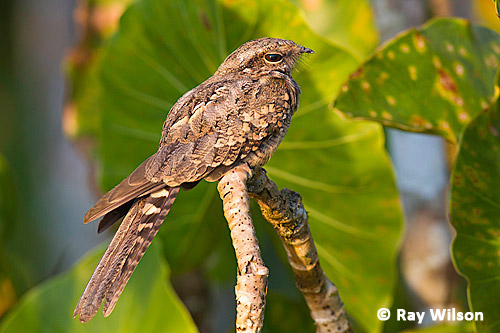
Ladder-tailed Nightjar (Hydropsalis climacocerca)
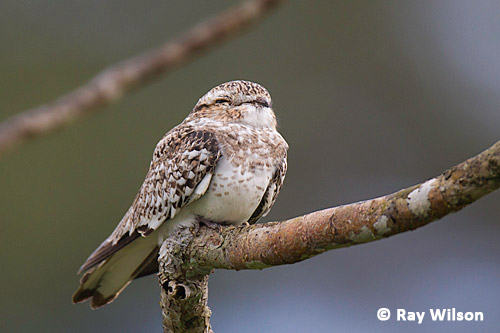
Sand-coloured Nighthawk (Chordeiles rupestris)
Another nocturnal species, the Sharp-nosed Bat, were roosting in a small colony of about 30 individuals out in the open on a dead, partially-submerged tree stump in the middle of the lagoon.
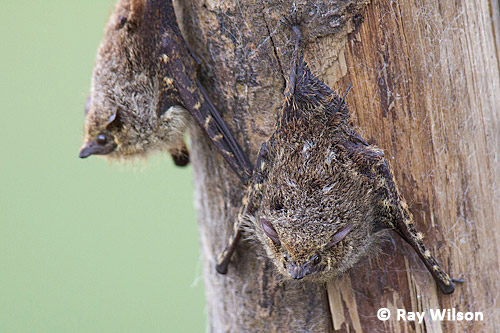
Sharp-nosed Bat (Rhynchonycteris naso)
Other species we frequently encountered around the edge of the lagoon were Black-capped Donacobius, Greater Ani and Ruddy Pigeon.
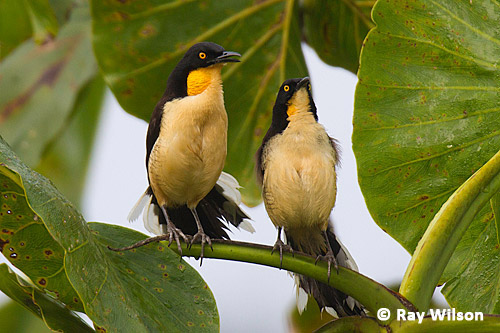
Black-capped Donacobius (Donacobius atricapillus)
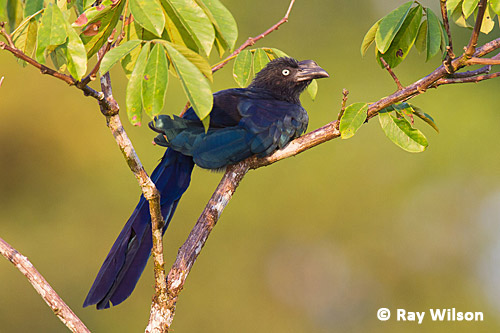
Greater Ani (Crotophaga major)
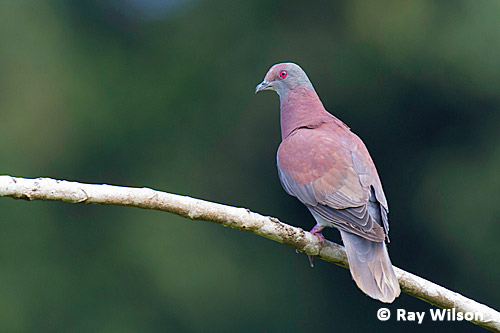
Ruddy Pigeon (Columba subvinacea)
Back on terra firma, Black-fronted Nunbirds were fairly common in the trees surrounding the lodge cabins.
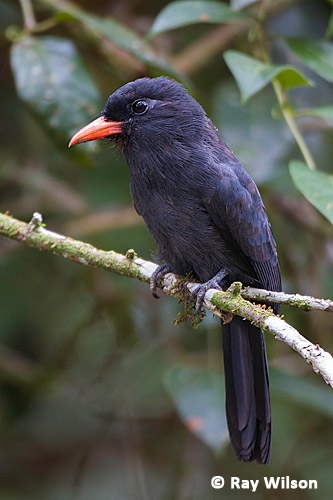
Black-fronted Nunbird (Monasa nigrifrons)
Nocturnal forays into the forest were a bit disappointing, with a bizarre-looking Whip Scorpion being one of the few highlights.
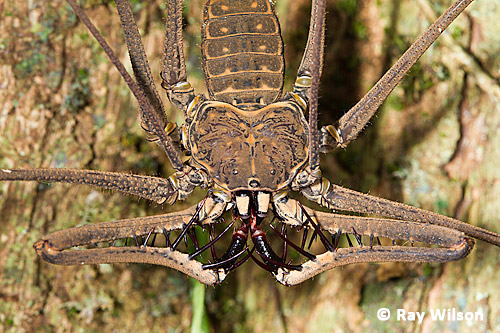
Whip Scorpion
In all tropical rainforests, a large percentage of the wildlife is not usually visible from the forest floor as they reside high up in the canopy. To get a chance to see some of the canopy specialists you need to get up into the canopy...
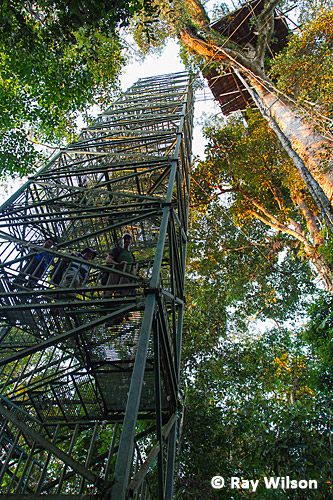
203 stairs have to be climbed to reach the canopy |
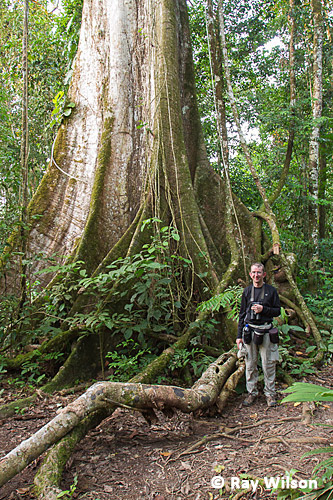
Me standing beside the canopy tower tree
to give a |
Once you have climbed the dizzying heights and are safely ensconced on the canopy platform, eye-level views of many spectacular species can be obtained.
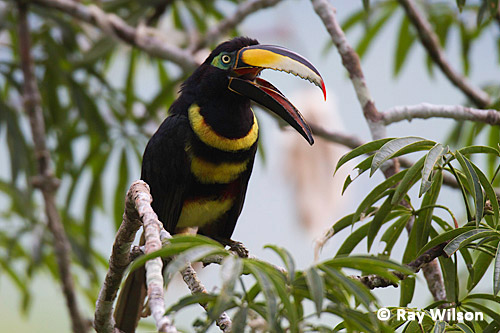
Many-banded Aracari (Pteroglossus pluricinctus)
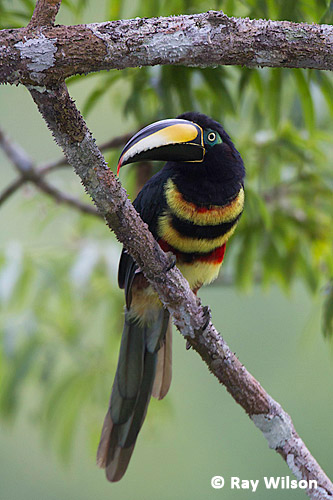
Many-banded Aracari (Pteroglossus pluricinctus) |
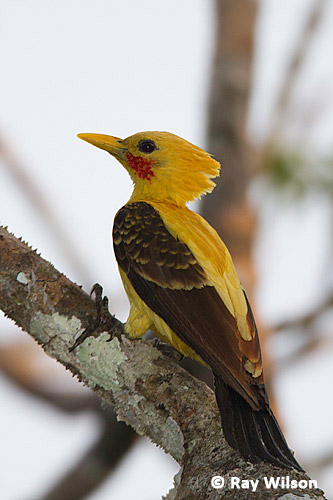
Cream-coloured Woodpecker (Celeus flavus) |
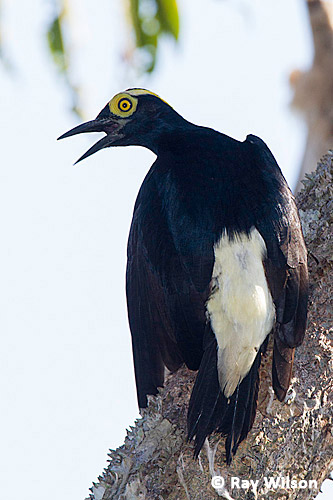
Yellow-tufted Woodpecker (Melanerpes cruentatus)
Occasionally a feeding flock of Tanagers will pass through...
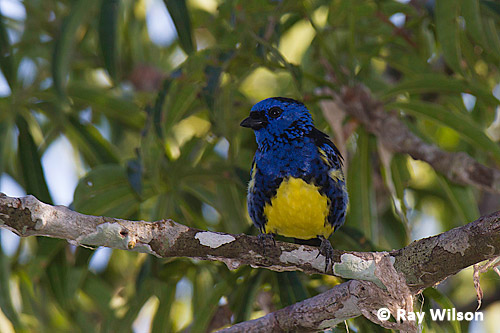
Turquoise Tanager (Tangara mexicana)
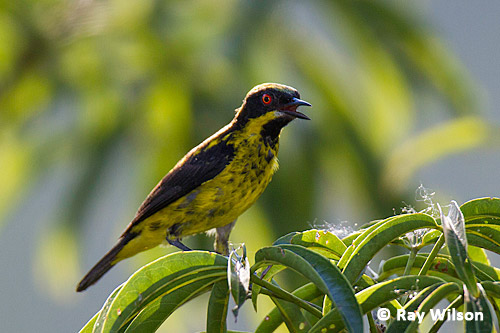
Yellow-bellied Dacnis (Dacnis flaviventer)
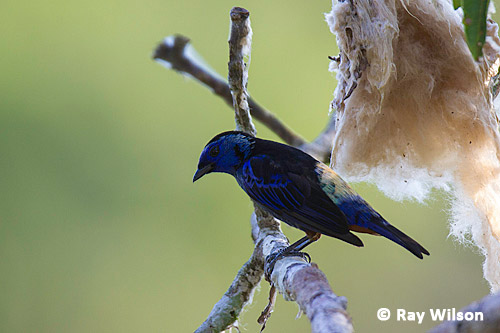
Opal-rumped Tanager (Tangara velia)
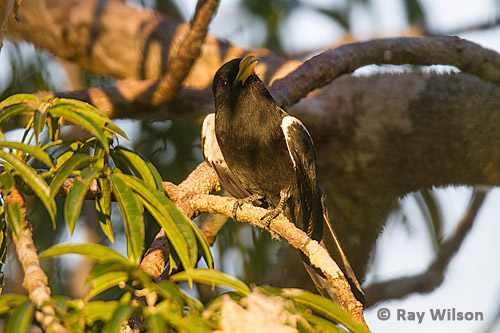
Yellow-billed Nunbird (Monasa flavirostris)
At dawn one morning we headed back to the main river to visit a couple of parrot clay-licks a few kilometres upriver at a neighbouring lodge.

Napo River at sunrise
The first clay-lick we visited was on the banks of the main river and was frequented by a large flock of Blue-headed Parrots, Mealy Amazons and Yellow-crowned Amazons. Since it was not practical for us to use tripods while drifting past in the boat, the best option was to do all the photography hand-held...not easy with a very heavy 600mm lens!
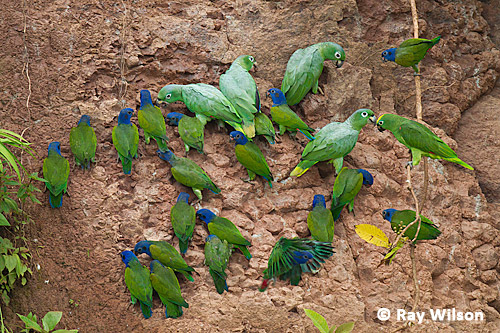
Blue-headed Parrots (Pionus menstruus), Mealy Amazons (Amazona farinosa) & a Yellow-crowned Amazon (Amazona ochrocephala)
Once we had had our fill of that particular clay-lick we landed at a nearby wharf, pausing on the way to photograph a roosting Common Potoo, and walked about 1km into the forest where there was a clearing containing a small pool at the base of a clay cliff. Here, a different range of species (Cobalt-winged Parakeet, Orange-cheeked Parrot, Scarlet-shouldered Parakeet and Scarlet Macaw) gathered to drink the mineral-rich water.
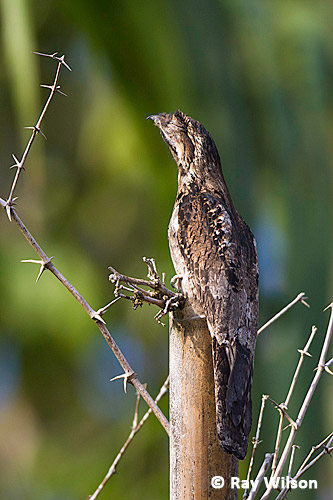
Common Potoo (Nyctibius griseus) |
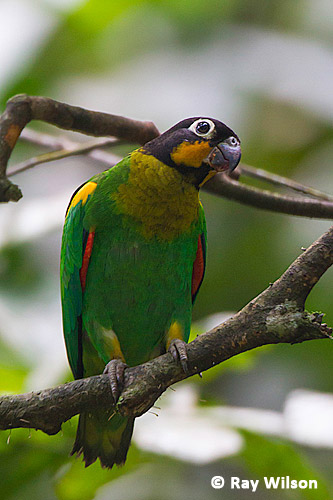
Orange-cheeked Parrot (Pionopsitta barrabandi) |
The light levels at the base of the cliff were extremely low and even at ISO1600 I was unable to get any shutter speeds higher than 1/40th of a second. This meant that with the constant movement of the birds in the flock it was impossible to get all the birds in sharp focus. The best strategy, therefore, was to concentrate on getting a couple of the birds in the foreground in sharp focus and hope that a few blurred flying parrots showing their beautiful cobalt-blue wings in the background would produce a pleasing composition: a difficult proposition when there are so many birds in constant motion! The shot below is the only one I liked out of over 700 frames...
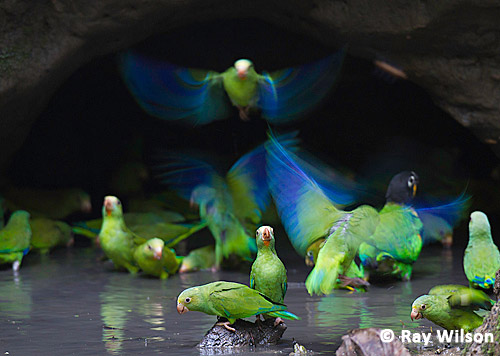
Cobalt-winged Parakeets (Brotogeris cyanoptera) & an Orange-cheeked Parrot (Pionopsitta barrabandi)
About a hundred metres from the parrot clay-lick, deep in the dark understorey of the forest is a lek of the Great-billed Hermit. These were incredibly frustrating birds. Although we could hear several males all around us, seeing them was another matter entirely and getting photos in the cluttered environs of the dense undergrowth was extremely difficult. Persistance paid off, however, and I eventually managed to get lucky with one individual who perched briefly in the open. The shutter speed on this one was even worse than with the parrots and it was taken at 1/15th of a second at ISO1600.
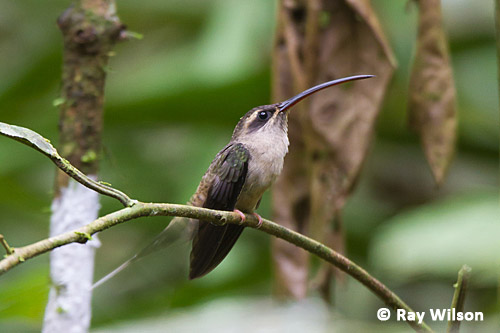
Great-billed Hermit (Phaethornis malaris)
On the way back to Sani Lodge, we made a slight detour to photograph a roosting Tawny-bellied Screech-owl...
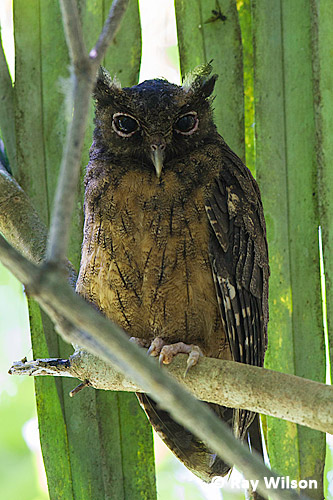
Tawny-bellied Screech-owl (Otus watsonii)
| San Isidro |
Ray Wilson owns the copyright of all images on this site.
They may not be used or copied in any form without prior written permission.
raywilsonphotography@googlemail.com